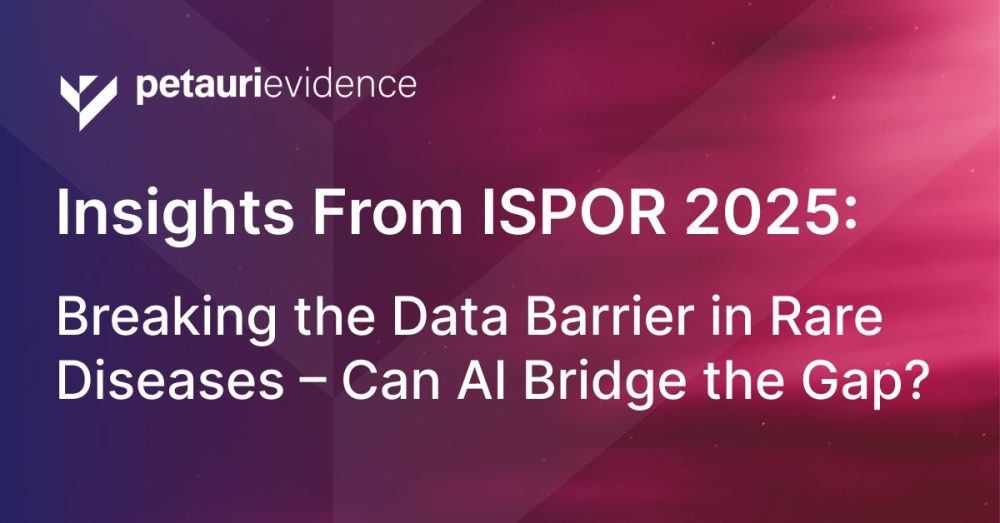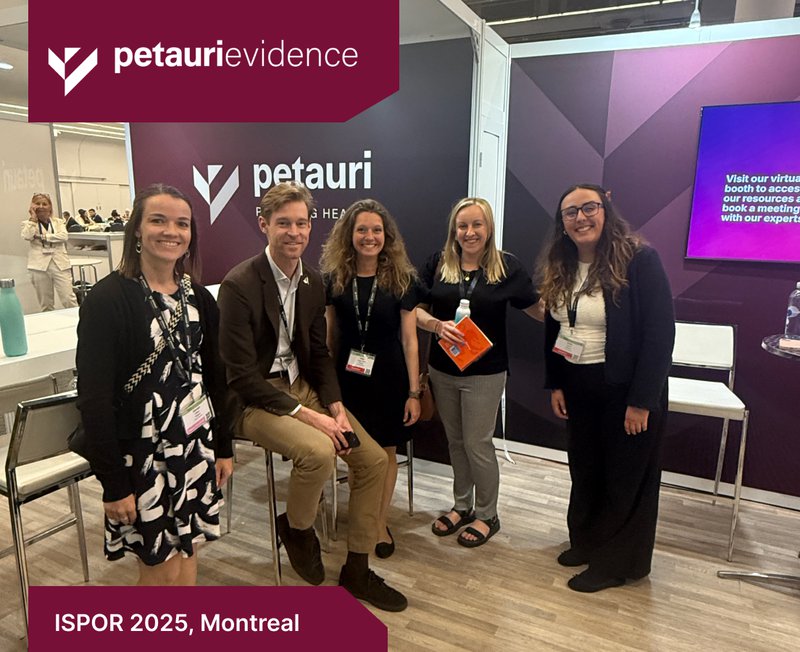Insights From ISPOR 2025: Breaking the Data Barrier in Rare Diseases – Can AI Bridge the Gap?

Last month, the ISPOR annual meeting in Montreal was brimming with opportunities to explore the latest developments and insights in health economics and outcomes research (HEOR) and market access. In this series, our experts share their perspectives and key takeaways from the conference. Here, Hannah Gillies and Emily Hardy from the Petauri Evidence HEOR and Systematic Review Teams explore the data challenges faced when working in the rare disease space and whether artificial intelligence (AI) can bridge the gap.
Data challenges in rare disease
HEOR faces significant challenges in rare diseases due to availability and quality of data. As the number of individuals with a confirmed diagnosis is often limited in given geographic areas, recruiting enough participants for clinical trials can be hard. Small and often heterogeneous trial populations can limit the robustness of data analysis and make it more difficult to identify trends. As a result, traditional research methods struggle to provide required evidence for healthcare decision-making.
Although each individual condition impacts only a small number of patients, rare diseases collectively affect over 300 million people worldwide. Many rare diseases are life threatening, progressive, and often affect children. As such, ensuring access to treatment is a critical priority. Challenges with rare disease research include regulatory constraints, data scarcity, fragmented data sources, inadequate comparator arm data, limited natural history knowledge, and poor data quality. To overcome the data challenges, industry experts rely on data from proxy conditions, invest in patient surveys, and explore real-world evidence sources.
The potential of AI in diagnosing rare diseases
A recent session at ISPOR Montreal highlighted the potential application of AI in diagnosis of rare diseases, in addition to supporting HEOR and drug development. AI can standardise unstructured data from patient electronic health records and case studies, analyse social media data to supplement surveys, and even create artificial patients to serve as synthetic controls. However, whether these AI-driven methods will be accepted by health technology assessment (HTA) bodies remains uncertain.
As AI continues to evolve, its role in rare disease research could be transformative, but its integration into HEOR will require careful validation and regulatory acceptance. The future of AI in rare disease research is promising, but its impact will depend on how the healthcare industry adapts.

For more thought leadership from our Petauri Evidence Team at ISPOR Montreal, visit our ISPOR virtual booth.

Share